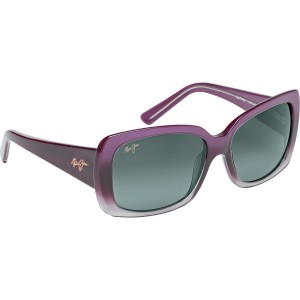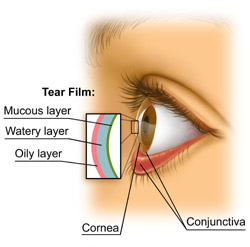Author: admin
Bifocal Contact Lenses
Yes, there is such as thing as bifocal contact lenses. Actually there are several different types of lenses. The rigid gas permeable multifocals provide the clearest, most stable vision. These lenses are custom designed and manufactured. Ocular health is excellent and so is the vision. Recent advancements in soft multifocals offer great comfort at most distances. The soft multifocal options include several different lens materials including the newer silicone hydrogel. They are also available for planned replacement, usually 2 weeks or 1 month, increasing convenience. Both types of contact lens multifocals minimize dependency on reading glasses.
A study published in the Optometry Visual Science journal showed that 7 out of 10 contact lens patients prefer multifocals over monovision. Many people are successful in monovision, one eye corrected for distance and the other eye compromised for near tasks. But others struggle with the disparity between the eyes, especially driving at night and working at the computer.
Multifocal contact lenses are an alternative to monovision or using reading glasses over contact lenses.
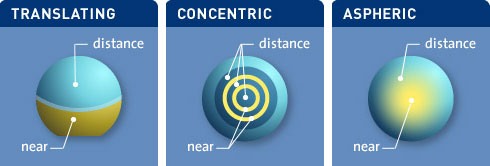
The above pictures show some of the different rigid gas permeable multifocal options. Certain designs work better for particular tasks. For example a lens design emphasizing distance clarity is indicated if you do a lot of driving , but if you spend most of the day in front of a computer screen you will need a lens with a large intermediate zone. If bifocal contact lenses are something you would like to try, give the office a call or make sure to ask about it at your next visit.
New Maui Jim Sunglasses
Maui Jim has really outdone itself in 2012. There are many new sunglass styles and some very exciting lens updates.
Gradient lenses and frames are the trend. If you like reading outdoors but find most sunglasses too dark, try a lens that is darker at the top and lighter at the bottom. It still has all the fantastic features of a Maui Jim sunlens: polorization, waterproof coatings, anti-reflective treatment and distortion-free optics.
Lani is shown here in the amethyst fade. It also comes in gloss black and Koa tortoise.
Lava Flow is pictured below in the gloss black with neutral grey lenses. It is a modified rectangle with a mid-size wrap. It is also available in a colorful burgundy tortoise frame with HCL bronze lenses.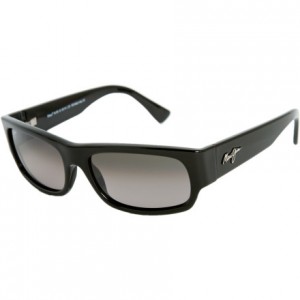
Westside Optometry still carries the light weight sporty styles too. Most of the Maui Jim sunglasses can be customized with your prescription. What can be better than sitting on a lounge chair reading or fly-fishing in your favorite river with your progressive Maui Jim sunglasses? If excellent distance vision is most important for a day in the boat or whale watching on the bluffs of the Pacific coast, prescription sunglasses are an excellent choice for you.
We have received our new selection of Maui Jim sunglasses, come try them on.
Kids and Glasses
Over the winter holiday we saw a lot of kids and fit a lot of “first pairs of glasses.” It is a thrill for everyone at Westside Optometry to see a child’s face light up when he or she puts on the glasses for the first time. Usually, she is a little surprised at the new vision, but a smile quickly follows as she tries to look at everything, running to the window, picking up magazines, and especially looking in the mirror.
Because children mimic what they see, I encourage parents to set a good example and attitude about how to wear and care for the new glasses. Here are some suggestions:
- Use both hands when taking glasses off to protect the hinges.
- Do not try to bend any part of the frames. If the glasses feel too tight or loose, bring them to our office for adjustment.
- Never place your glasses anywhere they can be stepped or sat on.
- Do not let anyone play or try on your glasses.
- Keep your glasses in their case when you are not wearing them.
- Clean your glasses with water and a soft cloth, not your shirt.
If your child plays sports, remember that regular glasses do not provide protection from injury. Make sure your child wears the right kind of sports safety eyewear at all times when playing sports.
2012 New Years Resolutions
If you make your 2012 resolutions with the intention of achieving good health and well-being, you will be benefiting your eyes also. Here are recommendations from Westside Optometry to get you started:
1. QUIT SMOKING
Smoking contributes to cataract formation, macular degeneration and dry eyes.
2. EAT MORE FRUITS AND VEGETABLES
Anti-oxidants and other nutrients found in a variety of fruits and vegetables can prevent age-related ocular conditions such as cataracts and macular degeneration.
3. EXERCISE REGULARLY
Exercise can benefit you in many ways. It reduces stress, helps control weight and improves circulation all benefits for you and your eyes.
4. SCHEDULE EYE EXAMINATIONS FOR THE KIDS
It is never to early for children to have their eyes examined. The American Optometric Association recommends the first eye exam at 6 months of age. Early detection of vision problems can save your child much frustration when learning to read and play sports.
Happy New Year
End of the Year Hours
 Westside Optometry will be open our regular hours with the exception of Monday December 26th and January 2nd.
Westside Optometry will be open our regular hours with the exception of Monday December 26th and January 2nd.
Mondays and Wednesdays 8:30 – 5:00
Tuesdays and Thursdays 9:00 – 6:00
Fridays 8:30 – 12:00
If you are trying to use your medical flex spending account before the end of the year, call to schedule an eye examination or order contact lenses. Drop by if you want to select new glasses or sunglasses.
We will also be open Saturday January 7th, if you are trying to juggle the kids appointments while they are out of school or home from college.
Use’em or Lose’em
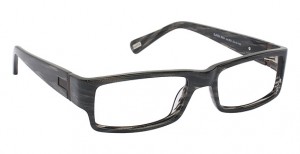 If your flex spending funds expire at the end of the year consider your eyewear needs. You can order contact lenses, a pair of computer glasses or some sunglasses.
If your flex spending funds expire at the end of the year consider your eyewear needs. You can order contact lenses, a pair of computer glasses or some sunglasses.
We’ve expanded our new FYSH line to include the men’s frames Evatik. Evatik incorporates innovative designs and lightweight materials.
The new Kate Spade sunglasses have arrived also. Check out “Grady,” the brown is pictured here. The sunglass also comes in black and has polka dots on the inside. 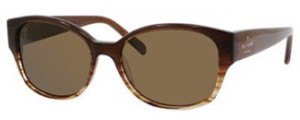
If you want to order contact lenses, you can simply call the office, they can be shipped directly to you, or use our online contact ordering, the link is on the right of the page. (ORDER CONTACTS)
Holiday Gift Safety
I think the Prevent Blindness Organzation sums up gift safety better than I can so I am sharing their press release.
Children Should Spend the Holidays with Friends and Family, Not in the Emergency Room
The holiday shopping season is already in full swing for retailers as well as shoppers who are eager to begin purchasing everything on their lists. But, when it comes to toys and gifts, the lowest sale price may not be the safest for children.
The U.S. Consumer Product Safety Commission (CPSC) estimates in its most recent report that hospital emergency rooms treated 251,700 toy-related injuries in 2010 throughout the United States. Of that number, 72 percent of injuries were to those less than 15 years of age.
Additionally, the CPSC found that 46 percent of the estimated 251,700 ER-treated injuries occurred to the head and face area. Lacerations, abrasions and contusions made up most of these injuries.
Prevent Blindness America, the nation’s oldest eye health and safety organization, has declared December as Safe Toys and Gifts Awareness Month. The group encourages everyone to make conscientious purchasing decisions based on what is best for each individual child.
“In the excitement of the season, sometimes we may forget that not every gift is appropriate for every child,” said Hugh R. Parry, president and CEO of Prevent Blindness America. “By taking a few, easy safety precautions, we can keep the holidays happy for everyone!
Prevent Blindness America suggests:
Make recommendations to family members and friends about gifts that you feel are appropriate for your child. Be diligent about inspecting these gifts before allowing your child to play with them.
Inspect all toys before purchasing. Monitor toys that your child has received as gifts to make sure they are appropriate for your child’s age and developmental level.
For younger children, avoid play sets with small magnets and make sure batteries are secured within the toy. If magnets or batteries are ingested, serious injuries and/or death can occur.
Gifts of sports equipment should always be accompanied by protective gear (such as a basketball along with eye goggles or a face guard with a new batting helmet for baseball or softball).
Any toy that is labeled “supervision required” must always be used in the presence of an adult. Keep toys meant for older children away from younger ones.
Always save the warranties and directions for every toy. If possible, include a gift receipt. Repair or throw away damaged toys.
Avoid toys that shoot or include parts that fly off.
Inspect toys for sturdiness. Your child’s toys should be durable, with no sharp edges or points. The toys should also withstand impact. Dispose of plastic wrapping material immediately on toys as they may have sharp edges.
Don’t give toys with small parts to young children. Young kids tend to put things in their mouths, increasing the risk of choking. If the part of a toy can fit in a toilet paper roll, the toy is not appropriate for children under the age of 3.
For more information on safe toys and gifts for children as well as general children’s eye health topics, visit preventblindness.org.
Dry Eye Symptoms and Treatments
Last time I talked about the risks of dry eye. This included the increase incidence for people with diabetes. Today let’s talk about the symptoms. Dry eye presents in many different ways: the eyes can sting, burn, feel gritty, scratchy and even watery. That’s right, you can suffer from dry eyes and produce too many tears. The other significant symptom of dry eyes is fluctuating vision. If the tears evaporate too quickly, vision is best right after a good blink and blurs until the next blink. Identifying which layer or layers are compromised is the first step to finding the right treatment.
The tears consist of 3 different components:
1. Oils or lipids from the meibomian glands (in the eyelid)
2. Mucus from the goblet cells (surface of the eye)
3. Water or aqueous from the lacrimal gland (under the brow)
The eyelid can be a problem too. Inflammation of the eyelid margin is often a factor. The eyelid changes with age, it may be scarred or looser causing the lid to turn inward or outward. Either direction has a negative effect on the tears and blinking.
The goal of dry eye treatment is to restore the tear film balance. Addition of a humidifer, drops, ointments, supplements, change in diet, and/or punctal plugs can all be helpful. Once the cause of dry eye disease is identified I can create a treatment plan.
The first thing I recommend in treating dry eye disease is to control the factors that you can. Check out the last blog for a list, you can’t change your age or gender, but you can control your blood sugar, and some environmental factors. What you eat or do not eat matters too. Too much caffeine will dehydrate you. If you are a fan of energy drinks that are high in caffeine and sugar, try a week or two without them and see if your eyes feel better. I’ve seen significant improved in contact lens tolerance with the elimination of these drinks.
Do not suffer from dry eye, call Westside Optometry for evaluation and treatment. For more dry eye information download http://old.westsideoptometrynow.com/wp-content/uploads/2010/05/Dry-Eye-Syndrome.pdf
Dry Eye and Diabetes
November is National Diabetes Month. Last year and in previous blog posts, I wrote about diabetes and the eye. Today I want to talk about dry eye disease (and diabetes).
Dry eye can lead to decreased vision, corneal scarring and secondary bacterial infections. Not to mention the general discomfort and reduced quality of life from the symptoms.
There are 8 Risks Factors for the Development of Dry Eye Disease:
- AGE The older you are the greater the risk for dry eye.
- GENDER Women are twice as likely to develop dry eye than men.
- ENVIRONMENT This includes smoking, airplane travel, computer use, low humidity environments and several other considerations
- LID MARGIN DISEASE This is especially true of meibomian gland dysfunction. Meibomian, an icky sounding word on its own, but you should see the glands under a microscope when they are plugged or inflamed. It’s not pretty.
- CONTACT LENS WEAR Contact lens wear contributes to dry eye and increased symptoms
- OCULAR SURGERY Surgical procedures such as LASIK or cataract removal can cause temporary dry eye in patients who have predisposing risk factors.
- MEDICATIONS Many drugs including oral anti-histamines or anti-acne medications like (Isotretinoin)
And for the risk factor that ties this all in with Diabetes Month…
- SYSTEMIC CONDITIONS This includes not only diabetes but also rheumatoid arthritis and thyroid disease.
The mechanism responsible for dry eye disease in diabetic patients is unclear, but many studies have been done. One study found that the rate of dry eye disease was higher if the HbA1c values were higher. Yet another good reason to maintain diabetic control and lower HbA1c values. Another study showed that the tear proteins of diabetic patients are different from those of healthy subjects. More than half of the people who have diabetes experience dry eye symptoms and suffer from ocular dryness. Controlling the diabetes and managing the dry eye disease can lessen or alleviate the discomfort of ocular dryness.

